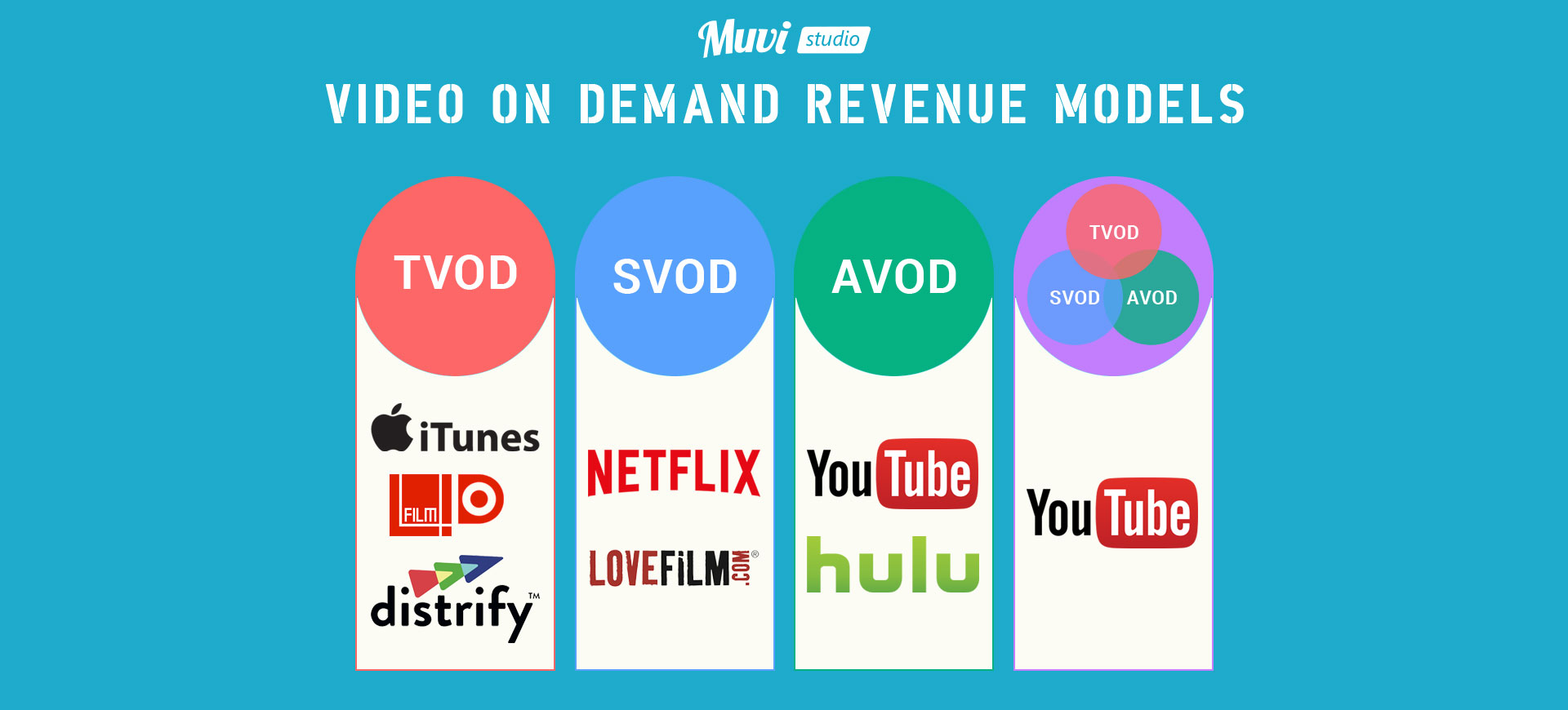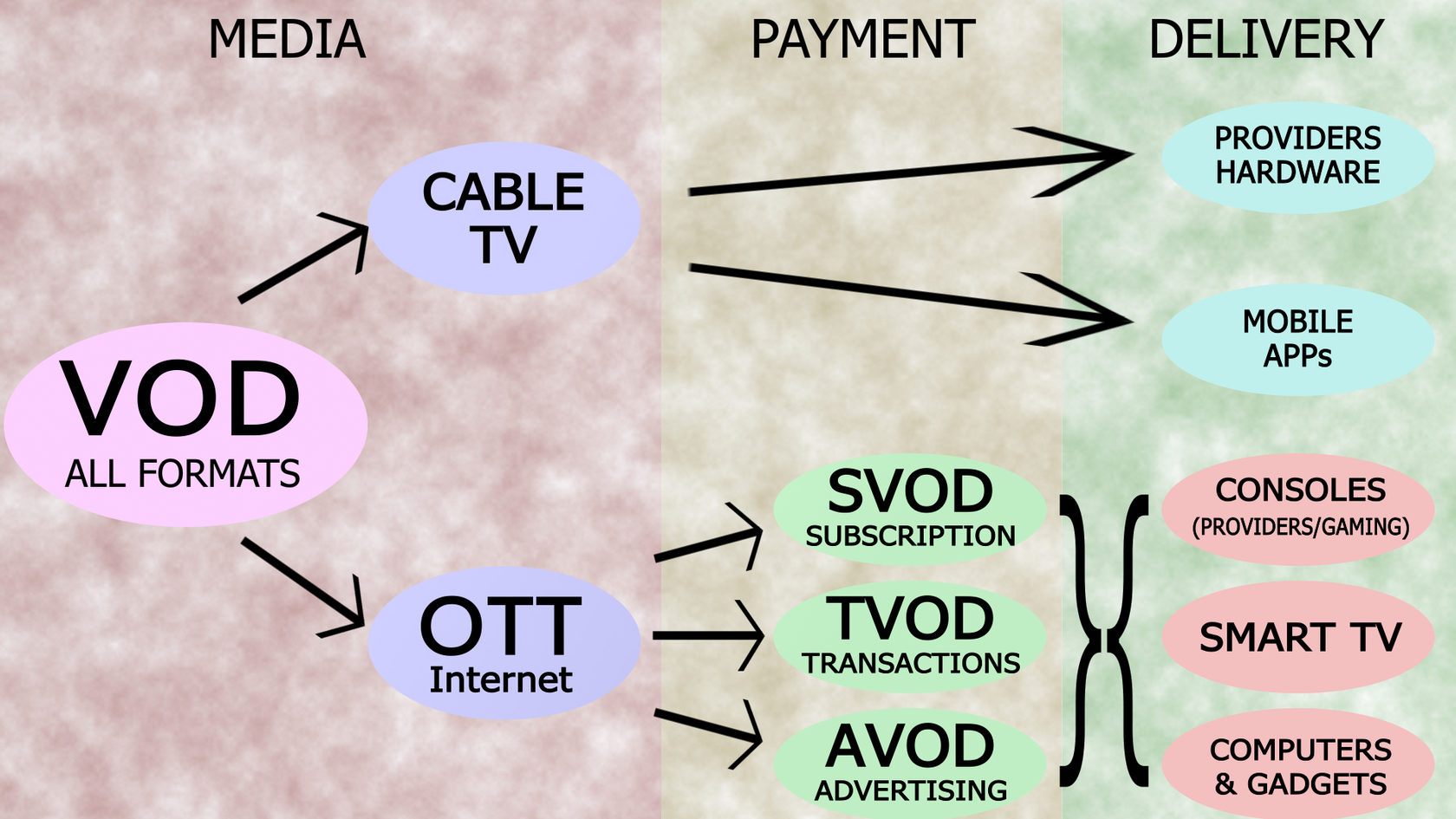According to statistics, there is an 80% chance that, if you live in the US, you are probably already watching video on demand in one form or the other. This is the generation of “Cord Cutters,” who always prefer streaming services rather than cable TV.
As such, the option to pick the best channels, content, or topics is determined by what you paid for, when you want to watch it, or how you want to watch it. Watching videos is the greatest distraction there is currently.
So, when it comes to the streaming world, there are some acronyms you are likely to come across such as VOD, SVOD, and AVOD. If you are not familiar with these words, you tend to be a little confused, wondering what they mean. In this review, we tell you what they mean.

VOD
VOD stands for Video on Demand. It is a way of consuming videos and falls under the umbrella of a distribution method called the OTT video, or the next generation of digital streaming.
OTT means that the video is streamed directly online, or “over-the-top,” of the cable box and doesn’t need you to have any cable or satellite access.
VOD gives you access to online videos when you want them. The streaming content is usually hosted by a large digital library and this requires users to have access to the specific accounts. They can be open or free, or they could be available for renting or purchase.
How to Choose a VOD Platform
While seeking out a VOD platform it is important to consider a few questions such as,
- Does the platform host my content and also allow me to monetize it?
- Does it offer me a streaming service across the different types of devices such as ROKU, Apple TV, Chromecast, or Android?
- Does it have a high-quality streaming service, or is it low-quality videos?
SVOD
This stands for Subscription Videos on Demand. It is projected that the SVOD subscribers are going to explode in great volumes by the year 2025 from the current 199 million to 307 million. This is a great way of monetizing your videos if you can
- Offer ongoing content or classes that are streamed over time.
- Give your audience a flexible way of joining or opting out without any long-term contracts.
- Have a library filled with content that can be streamed time and time again.
- Release the limited content regularly to an audience that is dedicated.
SVOD is therefore essentially a video monetization strategic platform that has a recurring revenue monthly.
Benefits of SVOD
- It has a flexible subscription option
- It is able to create an ongoing revenue stream.
- It is able to help you engage with your audience and also creates a loyal base of subscribers.
- It shall give you the ability to publish the content exclusively.
AVOD
This stands for Advertising-based Video on Demand. As the name suggests, this is an advertising platform for videos. It is one of the most popular on YouTube, and also the most beneficial to people who have a large audience or a large following.
The individual ad views on the platform help to pay small amounts of money and they require large volumes of revenue. Smaller OTT creators will find that they can earn some reliable revenue through the SVOD or through a combination of SVOD and TVOD models.
So, essentially, AVOD is an ad-based VOD that lets you stream your video content for free, but it then requires your viewers to watch the ads. The revenue is paid when you create your content and then offer it without any subscription fee.
YouTube is actually the most well-known AVOD platform.

Conclusion
There you have it; the definition of the three most popular terms in the Video on Demand world, and how to choose which one to use, especially if you are a video content creator. At the end of the day, what you need is to have a monetized platform, so, all the best as you choose and use them.







